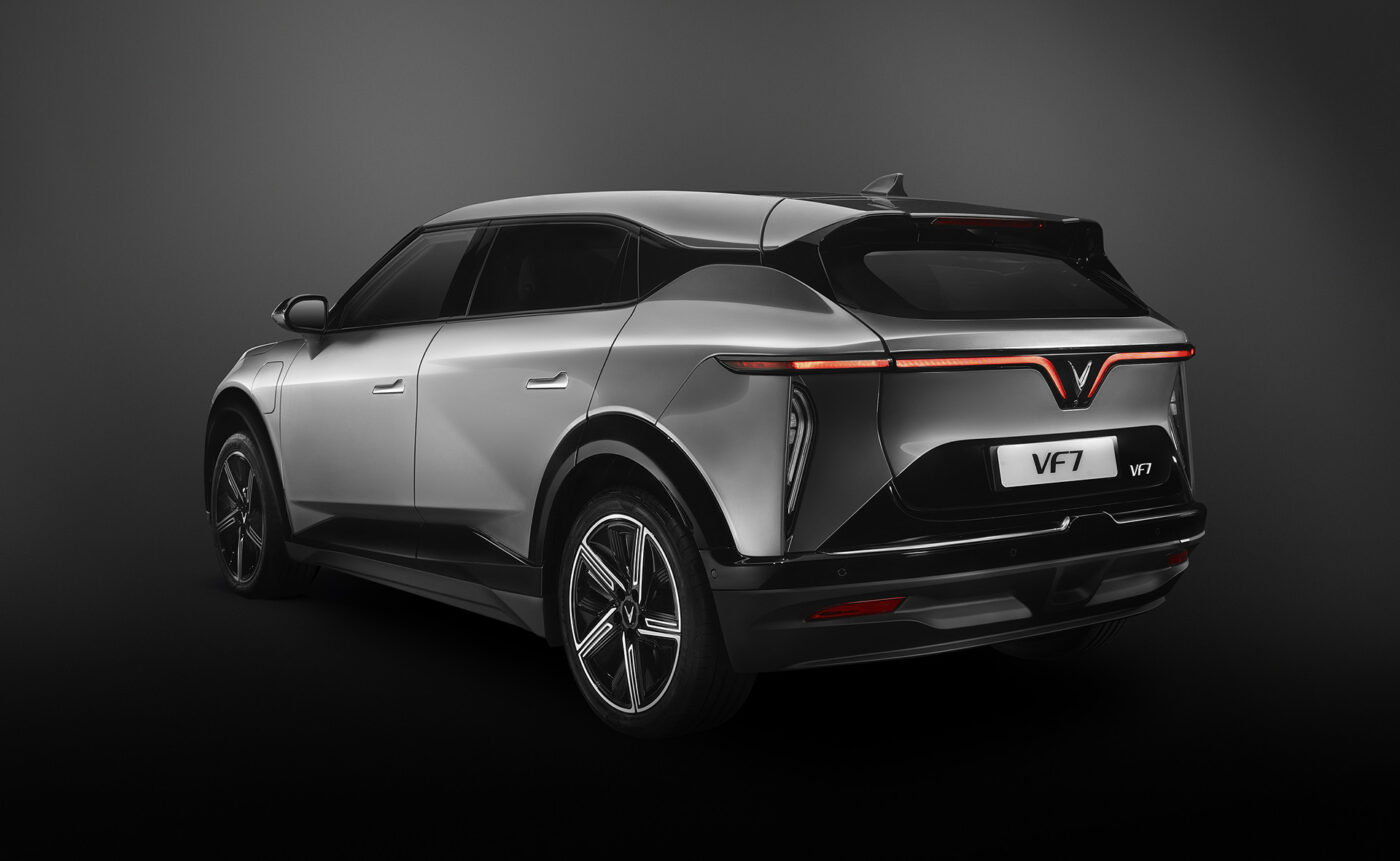VinFast launches the VF7 in Vietnam
After the technical data for the VF 7 was published in January, the prices are now following. The C-segment electric SUV starts in Vietnam from 850 million dong without battery or 999 million dong with battery, which corresponds to around 32,200 or 37,800 euros.
Like the VF 6, the vehicle is an electric crossover model, the design of which VinFast had already unveiled at CES 2022. The market launch initially focused on the two large models VF 8 and VF 9, and now the next two series will follow.
The VF 7 is 4.55 metres long with a wheelbase of 2.84 metres, 1.89 meters wide and 1.64 metres high – making it comparable to a VW ID.4. Customers can choose between the Base and Plus variants. The VF 7 Base has a 130 kW front-wheel drive with 250 Nm, a 59.6 kWh battery and a WLTP range of up to 375 kilometres.
The VF 7 Plus, on the other hand, has an electric all-wheel drive with two drives. Power and torque are correspondingly higher at 260 kW and 500 Nm. A 75.3 kWh battery serves as energy storage and the manufacturer puts the range at 431 kilometers.
VinFast still does not provide any information on the charging systems installed. There is also no mention of the VF 7 Eco, a front-wheel drive model with the large 75.3 kWh battery that was announced in January. This was supposed to have a 150 kW front-wheel drive with 310 Nm and a WLTP range of 450 kilometres.





1 Comment